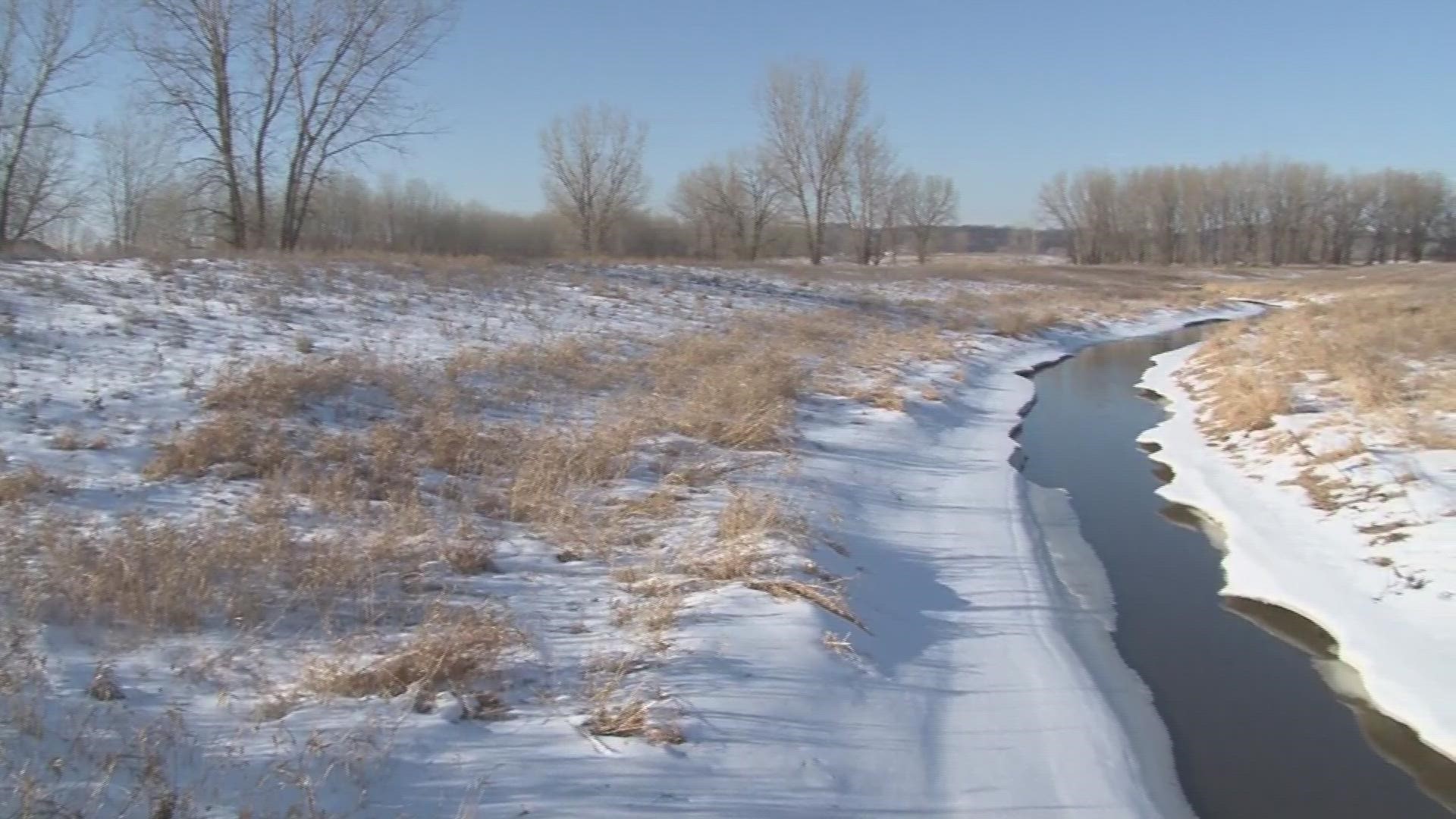ST PAUL, Minn. — When Tom Dimond walks through Pig's Eye Regional Park, he sees nothing but opportunity, a chance to clean up a legacy landfill and deliver a functioning park to surrounding neighborhoods and the city at large.
It's known as Pig's Eye Regional Park, covering 1,300 acres southeast of downtown St. Paul, including Pig's Eye Lake and adjacent land. But it's never been fully developed because of the toxic chemicals that were dumped there for decades, between the 1920s and 1970s.
"It's been planned as a park for 100 years. Trails, a boat launch, pavilions, and all of that kind of stuff were promised back in early 1980’s and were supposed to be here by 1989 at the latest," Dimond, who lives nearby and gives tours of the area, told KARE.
"Needless to say, they missed that target. One of the reasons is because this is polluted, that until you clean up the pollution you can’t really put in the amenities."
In fact, it's an EPA Super Fund site. In some areas rusted 55-gallon drums that once contained chemicals can be seen jutting out of the ground. The MPCA has test wells there to monitor ground water contamination, and regularly tests the sediment at the bottom of the lake. The agency has also constructed some barriers designed to slow spread of toxins into waterways.
"There's a variety of toxic chemicals here, including PFAS, a forever chemical, PFOS. PCBs, dioxins, just a soup of very toxic materials."
It's also along the migratory bird flyway and is home to a large rookery, or nesting area, for great blue herons. But the numbers of nests and birds have been dwindling in recent years, quite possibly because of the pollution in the food chain.
"They’ve been testing bird eggs here and at different locations. And the counts of the PCBs and other chemicals in the bird eggs here are some of the highest that have been found in the world."
Dimond and others believe area could qualify for funding through the new Federal Infrastructure Investment and Jobs Act because part of that money is designed to be used for environmental cleanup projects that benefit BIPOC communities.
The St. Paul City Council passed a resolution recently asking the state to help with an application for federal stimulus money to help finance the cleanup of Pig's Eye, and to consider spending part of the state's projected $7 billion budget surplus on the project.
The area is sandwiched between the Mississippi River on the west and Canadian Pacific Railroad tracks on the east, which run parallel to US Highway 10/61.
The governmental entities that control all or parts of the park include the city of St. Paul, Ramsey County, the DNR, the MPCA, MnDOT, Metropolitan Council, the U.S. Army Corps of Engineers, St. Paul Regional Water Services and the National Park Service.
Dimond was among several who testified in a House Natural Resources Committee meeting Tuesday. Rep. Rick Hansen, the committee chair, said his fellow lawmakers should consider that it's not just a St. Paul problem.
"Millions of people live downstream from this site. This can have a long-reaching legacy," Rep. Hansen said. "It’s been ignored for a very long time and we need to deal with it."
Hansen noted that the MLCAT Fund, a pool of money set aside for landfill cleanups financed with fees on waste dumped in them, isn't large enough to take care of the types of toxic sites that have been discovered in recent years.
The panel also heard from Mary Elizabeth deLaittre, who heads the Great River Passage Conservancy.
"Our goal really is to reveal, heal, connect and protect these acres. We are concerned with 'How do we heal a compromised landscape? How do we connect people to this landscape?'"
"It’s really important for us to have this partnership with the states and the feds, and this opportunity for potential cleanup funds because that could be really transformative for this area."
Ramsey County is in the midst of constructing new islands in the middle of Pig's Eye Lake to serve as new habitat for migrating birds and other wildlife that live in the area all or part of the year.

